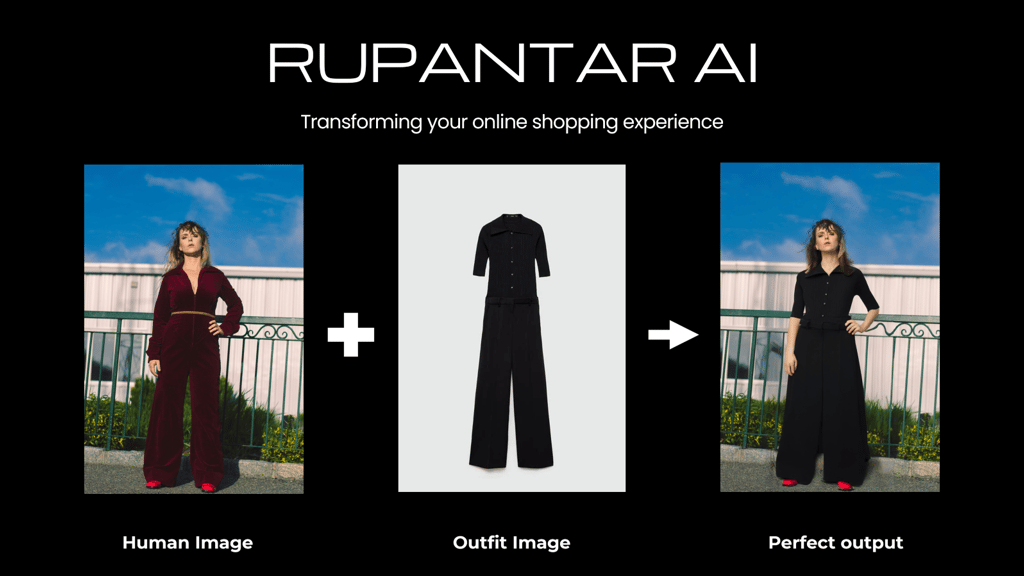Key Advantages of Virtual Try-On Tools for Modern Brands
The Future of Fashion Ecommerce
9/27/20253 min read


The way consumers shop for fashion online is changing rapidly. Static product photos and size charts are no longer enough to convince buyers to click add to cart. Shoppers today expect personalization, interactivity, and confidence before they buy — and Virtual Try-On (VTO) technology has emerged as one of the most powerful solutions to meet that demand.
Whether powered by AI, AR, or 3D visualization, virtual try-on tools allow shoppers to see clothing or accessories on themselves digitally, using just a photo or live camera feed. From sunglasses and sneakers to jackets and dresses, virtual fitting rooms are transforming how fashion brands sell online.
In this article, we’ll explore the biggest advantages of using a virtual try-on tool for fashion brands, backed by industry numbers — and why adopting it now is not just a competitive edge, but a necessity.
What Exactly Is a Virtual Try-On Tool?
A Virtual Try-On tool enables customers to digitally visualize how products look on them before purchasing — without physically wearing them. This can be done through:
Face-based try-ons (lipstick, glasses, jewelry, hats)
Body apparel try-ons (tops, dresses, jackets)
Footwear try-ons (sneakers, heels, sandals)
Mixed & layered outfit combinations
Depending on the platform, it works through photo upload, live AR (Augmented Reality), or AI-generated model simulation.
Top Advantages of Virtual Try-On for Fashion Brands
1. Boosts Conversions by Turning Browsers into Buyers
One of the biggest obstacles in fashion ecommerce is hesitation. Shoppers love an item but worry — “Will it look good on me?”
Virtual try-on removes that uncertainty.
According to Shopify, products with AR experiences see up to a 94% higher conversion rate.
When customers see themselves in the product, decision-making becomes instant and confident — leading to more sales with zero discounts required.
2. Reduce Return Rates Significantly
The fashion industry suffers from high return rates — often 30-40% due to sizing and style mismatch. Returns are expensive, operationally complex, and bad for brand loyalty.
Virtual try-on gives customers more realistic expectations, resulting in:
✅ Fewer size-based returns
✅ Reduced impulse buying followed by regret
✅ Higher satisfaction post-delivery
For brands, this means dramatically lower reverse logistics costs and improved unit economics.
3. Increases Customer Engagement & Time Spent on Site
Virtual try-on tools are not only functional — they are fun.
Users often experiment with multiple looks, try various color variants, and share screenshots with friends for feedback.
This naturally increases:
Session duration
Pages per visit
Repeat visits
And ecommerce platforms reward high engagement with better search rankings and higher visibility within recommendation engines.
4. Enables Hyper-Personalized Shopping Experiences
Instead of relying on generic product photos, shoppers get a version of the product tailored to their face or body type.
This allows brands to:
Recommend styles that match body proportions
Upsell matching accessories
Build loyalty through personalization
Unlike traditional recommendation engines that rely on click data, AI try-on engines use visual context, making them far more powerful.
5. Drives Social Media Virality & UGC (User-Generated Content)
Customers love sharing “Look what I tried virtually!” moments.
When implemented well, a virtual try-on tool becomes a built-in viral marketing feature:
Shoppers post their try-on results on Instagram, TikTok, Snapchat
Influencers can review collections without physical products
Brands get authentic UGC without paying for studio shoots
Some beauty brands reported 10x social mentions after launching try-on filters — fashion brands are now following the same playbook.
6. Enhances Sustainability & Reduces Waste
Fast fashion is under pressure to become more responsible.
Virtual try-on allows brands to:
Reduce sample production for photoshoots
Cut back on high return-driven waste
Enable smarter purchase decisions
Sustainability is no longer just a PR angle — it’s a conversion driver, especially for Gen Z and conscious buyers.
7. Gives Fashion Brands a First-Mover Competitive Advantage
Soon, virtual try-on tools will be as standard as size charts. Early adopters will win customer loyalty early - late adopters will play catch-up.
Several global brands have already implemented it:
Gucci increased mobile conversions by implementing Virtual Try On
Eyewear brands like Warby Parker and Lenskart have Virtual Try On
Nike's return rate dropped significantly by 28% by implementing Virtual Try On
Even mid-sized and D2C fashion brands are rapidly onboarding this technology, making it more accessible than ever.
How to Choose the Right Virtual Try-On Tool
Before integrating, ask these questions:
✅ Does it support your product type? (Apparel, accessories, footwear?)
✅ Is it mobile-friendly and fast-loading?
✅ Can users try products via photo upload or live camera?
✅ Does it integrate seamlessly with Shopify, Magento, WooCommerce, etc.?
✅ Does it offer analytics on try-on usage and conversion lift?
We at RUPANTAR.AI are enabling fashion brands to launch realistic virtual try-ons without complex 3D modeling or expensive AR development, making it possible for even young D2C brands to compete with industry giants.
Check out our Shopify App - https://apps.shopify.com/rupantar-ai
RUPANTAR AI Shopify App offers fully interactive, lightning-fast virtual try-on experience.
Final Thoughts: Virtual Try-On isn’t just the Future — It’s the Now
Fashion ecommerce is shifting from static viewing to interactive wearing. Brands that embrace this transition early will:
✅ Build more trust
✅ Convert faster
✅ Reduce operational losses
✅ Create buzz organically
If you’re still relying on basic product images alone, you’re leaving money on the table.
If interested, Reach out to us on Instagram / Linkedin / Contact Us and we’ll guide you further.
